At the end of Q3 2012, we looked at the number of RIPE NCC members and the resources allocated over the last few months. We were interested to see if there are any significant changes since the RIPE NCC started allocating from the last /8.
At the beginning of November, we have been looking at various LIR related statistics for Q3 2012. Currently we have just under 8,500 Local Internet Registries (LIR) registered with the RIPE NCC.
The most visible changes are IPv6 related which is maybe not surprising. In the last two months we made a record number of 397 new IPv6 allocations to LIRs, topping the previous record from January 2011 (when IANA allocated their last IPv4 ranges to the RIRs) significantly as you can see in the image below.
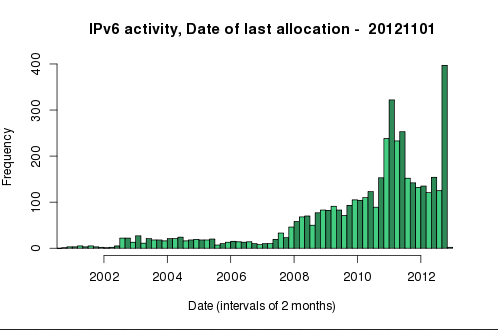
However, as noted before, this doesn't mean that these IPv6 addresses are actually deployed (yet). The gap between allocated and deployed or visible IPv6 addresses has been increasing recently, partially because the policy for requesting address space from the last /8 requires to have an IPv6 allocation first. We already pointed this out in Number of New LIRs and their IPv6 RIPEness , but one month later this becomes even more pronounced as you can see in Figure 2 below.
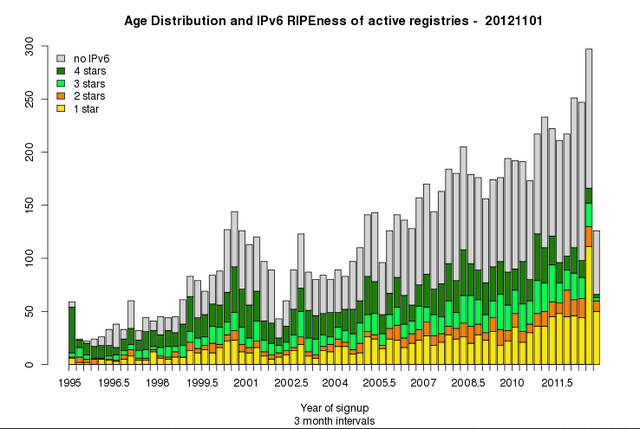
About half of those LIRs that started in the second half 2012 have an IPv6 allocation (indicated by the cumulative coloured bars) which is higher than usual. However, only a small percentage of them have reached more than 1-star IPv6 RIPEness, That means their IPv6 prefix is not visible in BGP, there is no route6 object in the RIPE DB, and no reverse delegation has been set up.
Also, unlike the peak at the time when IANA allocated the last blocks of IPv4 address space, the recent surge in IPv6 allocations is mostly with LIRs who signed up in the last few years. The image below plots the date of an IPv6 allocation against the date the LIR holding that allocation joined the RIPE NCC. The horizontal line visible for early 2011 shows that LIRs who got an IPv6 allocation around the time IANA ran out of IPv4, were of all ages. An equivalent line is not seen at the very top of the graph; instead the green markers are more concentrated towards the right. This indicates it's mostly the younger LIRs that request IPv6 address space now.
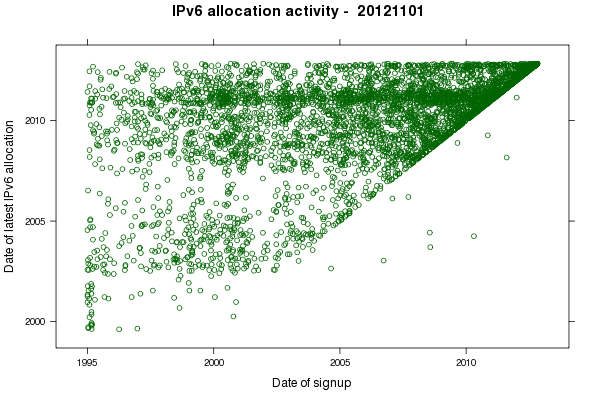
In terms of growth, so far no adverse effects of IPv4 run-out are visible. As shown in Figure 4 below, the number of organisations which applied to become an LIR in October 2012 remains high. As the process does take some time, not all of the applicants are active LIRs yet. The graph indicates this with colour coding within each bar:
- Bright blue = new LIRs whose application is still pending
- Bright green = LIRs which completed all steps and have activated their account
- Purple = organisations that reconsidered their application (the account that had been opened for them has been closed without the organisation ever becoming an active LIR).
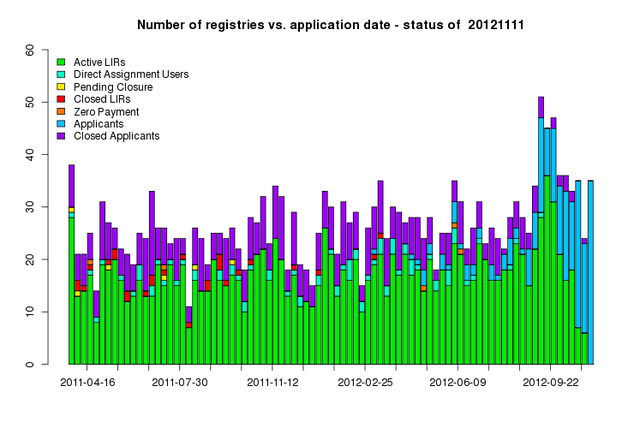
Conclusions
Since the RIPE NCC started allocating from the last /8 of IPv4 address space, we saw an increase in IPv6 allocation requests which is probably related to the requirements for getting a /22 from the last /8 of IPv4. This is also supported by the fact that most LIRs requesting IPv6 are new LIRs.

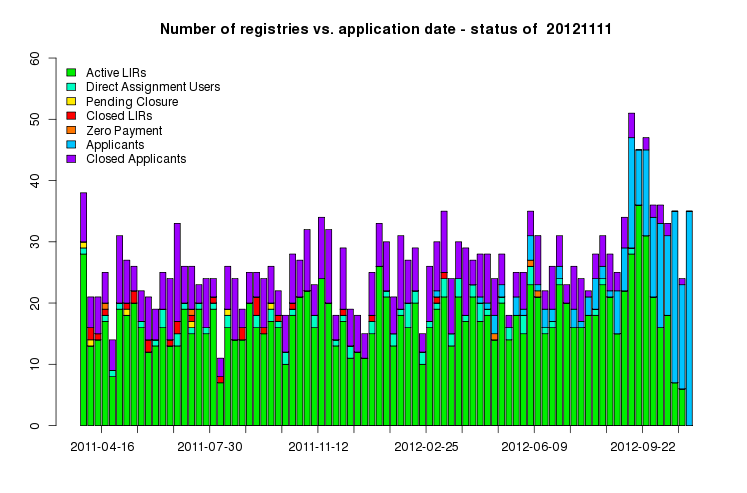

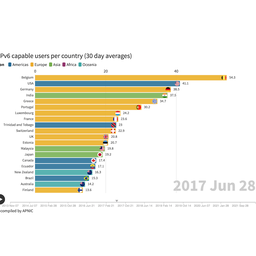
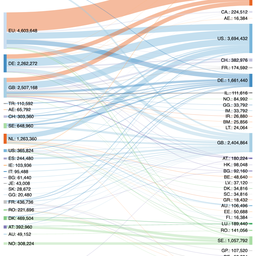
Comments 2
The comments section is closed for articles published more than a year ago. If you'd like to inform us of any issues, please contact us.
Sander Steffann •
Where do the allocations done before signup come from in Figure 3?
Rene Wilhelm •
Those are the result of mergers and acquisitions where resources from an older LIR are transfered to a newer LIR. The allocation date does not change in those cases.